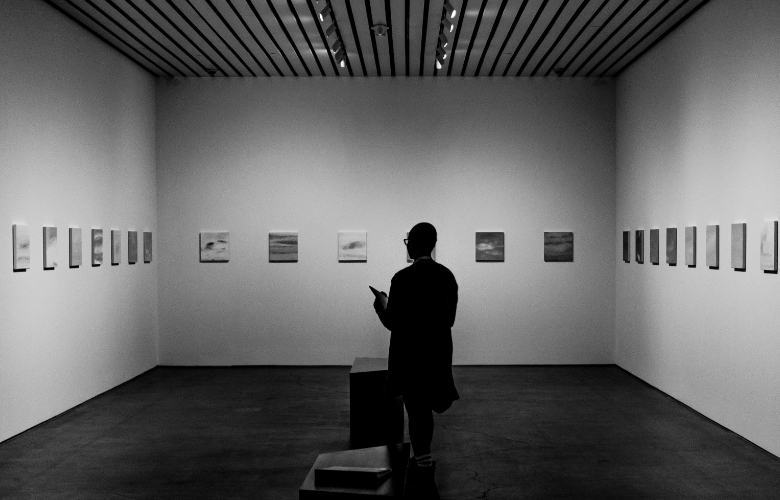
The investment in quality mat board is a small price to pay for the long-term preservation and enjoyment of your valuable artwork. So, when framing and preserving your cherished masterpieces, remember to incorporate matboard for an added layer of protection and aesthetic enhancement.
Your artwork deserves nothing less than the best. Artwork holds immense value, both aesthetically and emotionally. Preserving and showcasing artwork properly is crucial to ensure its longevity and visual appeal. One effective method of preserving artwork is through the use of mat board.
We will explore what mat board is, why it is important for preserving art, the types of mat boards that are best suited for this purpose, and how they contribute to the overall presentation of artwork.
What is Mat Board?
Mat board, also known as mounting board or matting, is a thick and rigid board material typically made from high-quality, acid-free paper-based materials. It is specifically designed to enhance the visual appeal of artwork, provide structural support, and protect it from potential damage. Mat board is commonly used in framing applications to create a border or window around the artwork, adding depth and separation between the artwork and the frame.
Preserving Artwork: Why Use Mat Board?
Using mat board serves several important purposes in the preservation of artwork. First,
it helps with protection from moisture and acidic materials. Mat board acts as a protective barrier between the artwork and the glazing material (such as glass or acrylic). It helps prevent moisture from coming into direct contact with the artwork, reducing the risk of water damage or mold growth.
Additionally, mat board is often made from acid-free materials, which helps to prevent acid migration from the board onto the artwork, thus safeguarding it from yellowing, discoloration, or deterioration over time.
Secondly, it helps with preventing direct contact between the artwork and the glazing material which can lead to smudging, sticking, or adhesion over time. By placing a mat board between the artwork and the glazing, any potential adhesion issues are avoided, ensuring the preservation of the artwork’s integrity.
Lastly, it can help with visual enhancement. Mat board enhances the overall presentation of artwork by providing a border or window that draws attention to the piece. It adds depth, separates the artwork from the frame, and creates a visually pleasing transition between the artwork and the surrounding environment.
Types of Mat Board: Choosing the Best for Preservation
When selecting mat board for artwork preservation, it is essential to consider the following factors:
Acid-Free and Archival Quality
Opt for mat boards that are acid-free and made from archival-quality materials. Acid-free mat boards are free from acidic compounds that can damage the artwork over time. Archival-quality materials are specifically designed to meet preservation standards and provide long-term protection against deterioration.
Thickness and Weight
Mat boards are available in various thicknesses, typically measured in ply or points. The thickness should be chosen based on the size and weight of the artwork. Thicker mat boards offer more structural support for larger or heavier artwork, while thinner boards work well for smaller or lightweight pieces.
Color and Texture
Consider the color and texture of the mat board to complement and enhance the artwork. Neutral and muted tones are often preferred to avoid overwhelming or distracting from the artwork itself. Textured mat boards can add depth and visual interest, but it’s important to ensure they don’t compete with the artwork’s texture.
Conservation Mat Board
For valuable or irreplaceable artwork, consider using conservation mat boards. These boards are specifically manufactured with added protection against pollutants, UV radiation, and acid migration, offering the highest level of preservation for the artwork.
Additional Preservation Tips
In addition to using mat board, there are several other recommendations for preserving art.
1. Proper Handling
Handle artwork with clean hands or wear gloves to prevent oils, dirt, or moisture from transferring onto the surface. Support the artwork from underneath or along the edges to avoid putting pressure on delicate areas.
2. Framing with UV-Protective Glazing
Choose glazing materials, such as UV-protective glass or acrylic, to shield artwork from harmful ultraviolet rays. UV rays can cause fading, discoloration, and deterioration of the artwork over time.
3. Climate Control
Maintain a stable and controlled environment for your artwork. Extreme temperatures, high humidity, and fluctuations in moisture levels can damage artwork. Ideally, store and display artwork in a space with controlled temperature and humidity levels.
4. Avoid Direct Sunlight
Sunlight can cause fading and damage to artwork. Avoid displaying artwork in direct sunlight or use window treatments, such as UV-filtering films or curtains, to minimize exposure.
5. Regular Cleaning
Dust and clean the surfaces of framed artwork regularly using a soft, lint-free cloth or a brush specifically designed for delicate surfaces. Avoid using cleaning solutions unless recommended by professionals.
6. Conservation Framing Techniques
Consider employing conservation framing techniques, such as using acid-free and archival-quality materials throughout the framing process. This includes acid-free tapes, adhesives, and backing boards to ensure the longevity of the artwork.
Conclusion
Preserving artwork goes beyond simply framing and displaying it. The use of mat board plays a crucial role in protecting and enhancing the longevity of artwork. By providing a protective barrier, preventing direct contact, and visually enhancing the presentation, mat boards contribute significantly to the overall preservation and appreciation of art.
When selecting mat boards, prioritize acid-free and archival-quality options, considering factors such as thickness, color, texture, and conservation-grade options. By carefully choosing the right mat board, you can ensure that your artwork remains protected from moisture, acid, and physical damage while also enhancing its visual appeal.


Guest Posts are written by featured authors who are not frequent contributors to TheatreArtLife. Details of the contributor can be found within each article unless the author wishes to remain anonymous. If you would like to submit a guest article to TheatreArtLife, please visit TheatreArtLife.com/Contribute or select CONTRIBUTE in the menu.
Read Full Profile© 2021 TheatreArtLife. All rights reserved.

Thank you so much for reading, but you have now reached your free article limit for this month.
Our contributors are currently writing more articles for you to enjoy.
To keep reading, all you have to do is become a subscriber and then you can read unlimited articles anytime.
Your investment will help us continue to ignite connections across the globe in live entertainment and build this community for industry professionals.